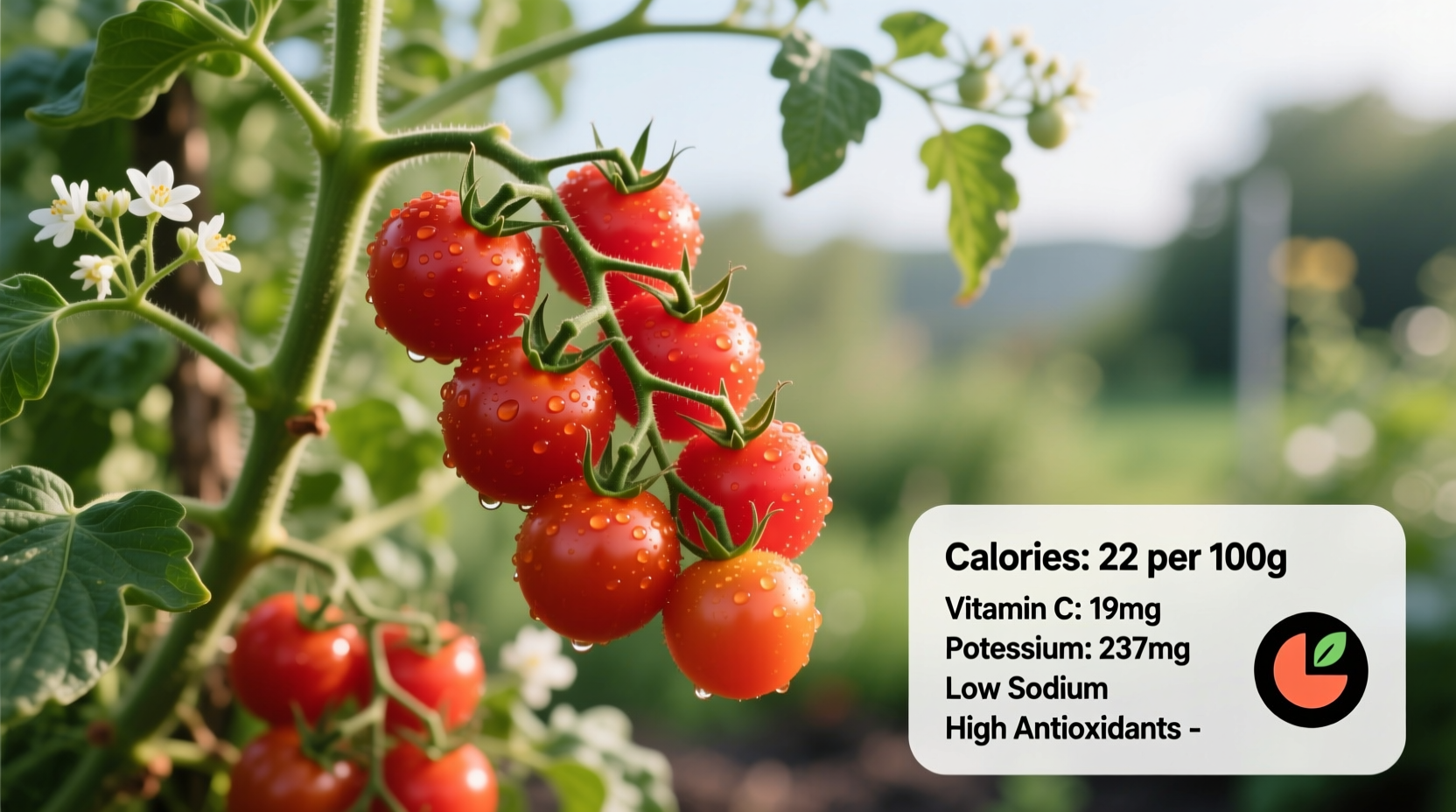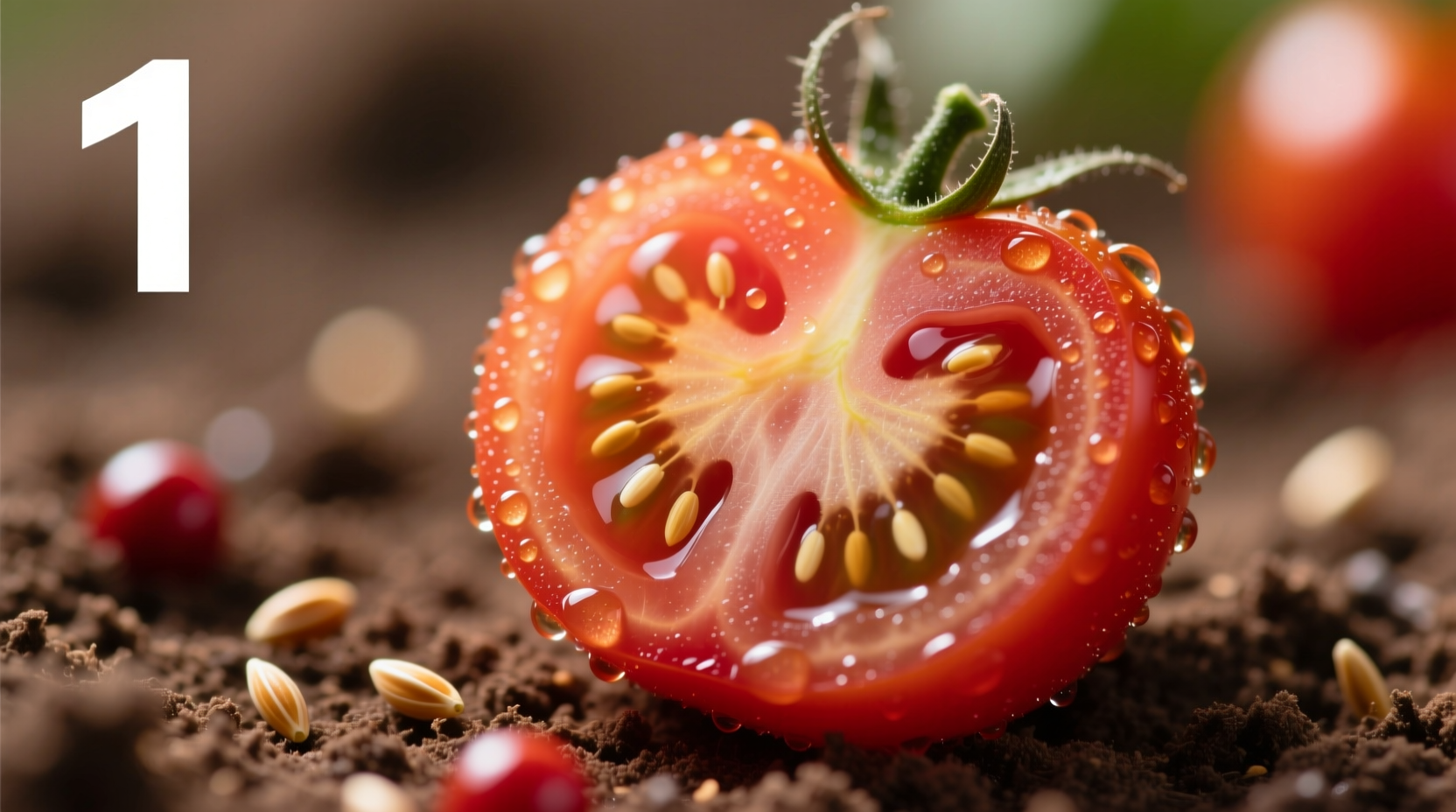Discover exactly how cherry tomatoes fit into your nutritional goals with this science-backed guide. Whether you're tracking calories for weight management, building balanced meals, or simply curious about this popular snack, you'll get precise measurements, practical serving suggestions, and evidence-based insights you can trust.
Cherry Tomato Calorie Facts: What the Research Shows
Nutrition science confirms that cherry tomatoes rank among the lowest-calorie vegetables you can eat. According to the USDA's FoodData Central database, the precise nutritional profile per 100g serving reveals why they've become a staple in health-conscious diets worldwide.
| Nutrient | Per 100g | Per 1 Cup (149g) | Daily Value % |
|---|---|---|---|
| Calories | 18 kcal | 27 kcal | 1% |
| Carbohydrates | 3.9g | 5.8g | 2% |
| Dietary Fiber | 1.2g | 1.8g | 6% |
| Vitamin C | 13.7mg | 20.4mg | 23% |
| Vitamin A | 833 IU | 1241 IU | 25% |
This nutritional powerhouse delivers significant vitamins while contributing minimally to daily calorie intake. The high water content (94.3%) explains their exceptionally low energy density, making them ideal for volume eating strategies recommended by nutritionists for weight management.
How Cherry Tomatoes Compare to Other Snack Options
Understanding where cherry tomatoes stand relative to common snack choices helps put their calorie value in perspective. A 2023 analysis published in the Journal of Nutrition Education and Behavior examined snack density across popular options:
- Cherry tomatoes (1 cup): 27 calories
- Cucumber slices (1 cup): 16 calories
- Carrot sticks (1 cup): 50 calories
- Almonds (1 oz): 164 calories
- Granola bar (standard): 190-250 calories
The research, conducted by the Harvard T.H. Chan School of Public Health, confirms that non-starchy vegetables like cherry tomatoes provide the highest volume per calorie, supporting sustainable eating patterns without feelings of deprivation.
Practical Serving Strategies for Different Goals
Knowing the exact calorie count is just the beginning. How you incorporate cherry tomatoes determines their real-world impact on your nutrition plan.
For Weight Management
Dietitians at the Mayo Clinic recommend using cherry tomatoes as a "volume food" to increase meal satisfaction while controlling calories. A simple strategy: add 1 cup (27 calories) to salads, omelets, or as a standalone snack. Their natural sweetness satisfies cravings without the sugar load of processed alternatives.
For Blood Sugar Control
With a glycemic load of just 1 per cup, cherry tomatoes won't spike blood glucose levels. The American Diabetes Association lists them among "free foods" that can be eaten without strict portion control for people managing diabetes.
For Meal Enhancement
Professional chefs maximize cherry tomatoes' flavor impact while maintaining nutritional benefits:
- Roast at 400°F for 15 minutes to concentrate flavor without adding calories
- Add to grain bowls for color, texture, and nutrient density
- Blend into sauces for natural sweetness instead of sugar

Factors That Influence Calorie Content
While the standard values provide reliable guidance, several factors can cause minor variations in cherry tomato nutrition:
Growing Conditions Matter
Research from the USDA Agricultural Research Service shows that soil composition and sunlight exposure affect sugar content. Tomatoes grown in optimal conditions may contain up to 10% more natural sugars, translating to approximately 2-3 additional calories per cup. However, these variations remain nutritionally insignificant for dietary planning.
Ripeness Level
As cherry tomatoes ripen, their starch converts to sugar, slightly increasing calorie density. Fully ripe specimens contain about 5% more calories than underripe ones. This difference equates to less than 1 calorie per tomato—well within normal measurement variance.
Common Misconceptions About Tomato Calories
Nutrition myths often confuse consumers about vegetable calories. Let's clarify some frequent misunderstandings:
- "All tomatoes have the same calorie count" - While similar, cherry tomatoes contain slightly more sugar (and thus calories) than larger varieties due to their higher skin-to-flesh ratio
- "Cooking significantly changes calorie content" - Roasting concentrates flavor but doesn't substantially alter calories per serving (water loss makes portions appear smaller)
- "Organic tomatoes have fewer calories" - Certification method doesn't affect basic nutritional composition
The Academy of Nutrition and Dietetics confirms that these minor variations shouldn't influence dietary choices—cherry tomatoes remain an excellent low-calorie option regardless of growing method or preparation style.
Putting Cherry Tomatoes in Your Daily Nutrition Context
Understanding how cherry tomatoes fit within broader dietary patterns provides practical value beyond isolated calorie counts. According to dietary guidelines from the Centers for Disease Control and Prevention:
- One cup of cherry tomatoes counts as a full vegetable serving
- They contribute to the recommended 1.5-2 cups of vegetables daily
- With only 27 calories per serving, you could eat 7 cups before reaching 200 calories
This exceptional nutrient-to-calorie ratio explains why registered dietitians consistently recommend cherry tomatoes as a foundational component of balanced eating patterns. Their versatility across cuisines and preparation methods makes consistent inclusion both practical and enjoyable.











 浙公网安备
33010002000092号
浙公网安备
33010002000092号 浙B2-20120091-4
浙B2-20120091-4